I'm an artist at heart, performer and songwriter, and a lover of all things creatively & artistically beautiful. In this little corner of the internet, we talk about how to live an artistic lifestyle, fit with the tools, techniques, tips, and community. Get comfy and cozy.
BACK TO THE BLOG
your go-to guide to trendy interior design styles (beginner-friendly)
filed under:
November 27, 2023
created on:
Any artist knows that a beautiful project doesn’t start with the little details.
It starts with a big, overarching concept, an idea, a feeling.
That’s why picking the interior design style for your home doesn’t require your being an interior designer— just knowing your dream feeling, spotting patterns, and finding what pulls at your heartstrings.
Sometimes I’ve had to remind myself about interior design that there’s really no wrong answer, and every design style always starts from somewhere, even if from your own brain!
While it’s easy to place styles in boxes— and helps us better focus on what we love— it’s important to remember that you can create your own theme to make a style that you love.
Maybe you’re pulled to the fun-loving, relaxed style of boho, the clean, dainty designs in Japanese or Japandi, or, like me, love a feminine, dainty, magical design that fairycore brings.
This little list of interior design styles is definitely not all-encompassing but hopefully gives you a little springboard towards an interior design style to inspire your next room re-design. Let’s hop right in.
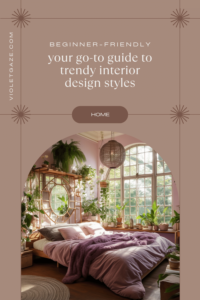
Your go-to guide to trendy interior design styles (beginner-friendly)
Fairycore.
This style is all about blending a magical, whimsical vibe that feels kind of like an enchanted forest with a soft, ethereal, and feminine edge. We’re talking:
- Soft, pastel color palettes like soft pinks, lilacs, pale blues, and mint greens (usually complemented by earthy tones to ground it)
- Natural elements and botanicals like wood, stone, plants, flowers, and botanical motifs
- Flowy, ethereal fabrics like lace, chiffon, and tulle for windows, canopies, and pillows
- Whimsical decor like fairy figurines, artwork of enchanted forests, and mystical, peculiar creatures
- Floral patterns and points in textiles, wallpaper, and art
- Vintage and antique accents for some timeless charm added to the space
- Whimsical and dreamy decor like dreamcatchers, wind chimes, and ornate mirrors that add a fairytale-like atmosphere
Splurge items
- Joan Switch Plate (Etsy)
- Flower Wall Sconce (Etsy)
- Fairy Decorative Light (Etsy)

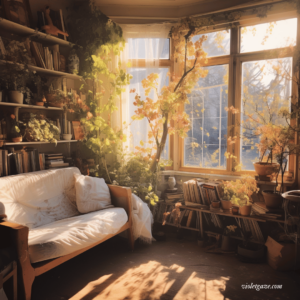
Cottagecore.
Cottagecore style is a simple, rustic, countryside interior design style with vintage furniture, floral patterns, and soft, welcoming colors. It’s for those who love a homey, warm, and slightly nostalgic space, akin to their grandmother’s home with a modern little twist. When you think cottagecore, think:
- Warm and cozy color palettes including creams, light greens, pastel pinks, and muted blues
- Floral, botanical, and gingham prints in wallpapers, upholstery, and linens
- Handmade and artisanal furniture and decor like wood, stone and wicker
- Extra layered textiles especially on seating and plush surfaces: think quilts, knitted throws, and lace for extra cozy!
- Rustic and farmhouse elements like wooden beams, apron sinks, barn doors and wood flooring
- Charming and quaint decor like vintage teapots embroidered cushions, and floral wreaths
- Patchwork and embroidery in textiles, add a more handmade touch (like someone not only designed everything but created it!)
- A homely and functional kitchen with practical elements like open shelving and glass mason jars
Splurge items
- EarthsTribe Cottagecore Blanket (Etsy)
- Forestland Linen table runner (Etsy)
- Rugables Fleur Oval Rug Multi-colored (Etsy)
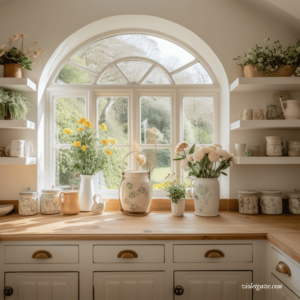
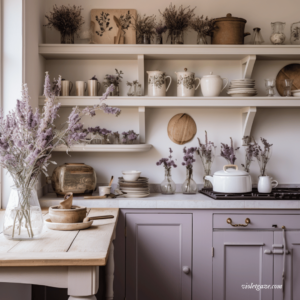
Forestcore.
This interior design style blends a little rustic with forest elements— think rich, earthy tones, natural materials, and botanical motifs all around. Plus, lots of green! If you feel like your safe space is a calming, dark sanctuary in the middle of nature, you’ll probably love forestcore. This interior design style focuses a lot on:
- An earthy color palette that mimics the forest, like deep greens, browns, and muted earth tones
- Natural materials like wooden furniture, stone accents, and wool and cotton textiles
- Woodland imagery and motifs like forest scenes and woodland creatures
- Windows and natural light with a view of the natural greenery outside (light + airy curtains are your friends!)
- Earthenware and stoneware (pottery and ceramics)
- Muted and matte finishes to mirror what’s found in the forest (glossy or shiny is more art-deco, and not as natural as forestcore needs!)
Splurge Items
- Hand-Knotted Wool Rug (Etsy)
- myLumpy bedside table (Etsy)
- MyWallStore dark vintage floral landscape (Etsy)
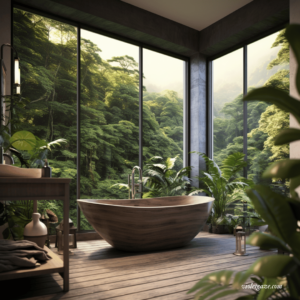
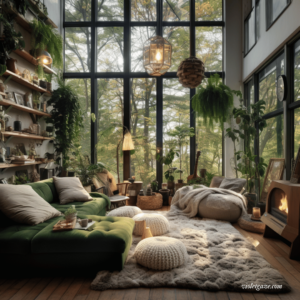
Japanese.
Japanese interior design put simply is minimalist elegance. This style is about natural elements, simplicity, practicality, and creating a sense of harmony and balance in a space. And while Feng Shui is a Chinese tradition, it’s commonly used in Japanese and Japandi interiors, too. This style is all about “less is more,” clean lines, minimal clutter, and traditional Japanese artwork. Some of the features:
- Minimalism and open space, emphasizing uncluttered, clean areas
- Natural materials like wood, bamboo, rice paper, and stone
- Neutral and earthy color palettes, using soft, natural tones
- Sliding doors or shoji screens made of wood and paper
- Tatami mats
- Low furniture, particularly floor cushions, low tables, and seating close to the ground
- Bonsai trees, bamboo, and other indoor plants
- Large windows and open spaces that maximize natural light and air circulation
- Fusuma (sliding panels) and byobu (folding screens) to separate rooms
- Simple, minimalistic decor (instead of cluttered, maximalist decor)
- Zen elements like rock gardens and water features
- Clean lines and geometric shapes in furniture and architecture
- A genkan, or entryway space, where shoes are removed!
Splurge Items
- Japanese Sakura Cherry Blossoms (Etsy)
- The Sofies Boutique Retro Japanese Floor Lamp (Etsy)
- Ree and Mee Floor Sofa (Etsy)
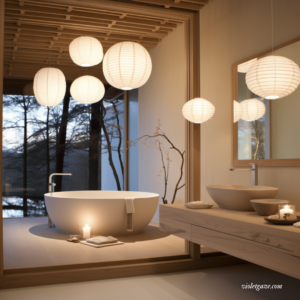

Japandi.
Japandi is a combination of Japanese and Scandi interior design, blending the minimalism, functionality, and calming atmosphere from both countries into one.
This style is all about…
- Minimalist designs that emphasize clean lines, simplicity, and uncluttered spaces
- Neutral color palettes with muted, soft tones drawn from nature (a limited color scheme of just a few tones with less contrast and more harmony)
- Use of natural materials like wood, stone, and wool
- Functional furniture with a focus on quality craftsmanship, often featuring simple, sleek designs and natural finishes
- Open, airy spaces with lots of natural light
- Minimal decorative items, with each piece carefully chosen for its functionality and beauty.
- Cozy and comfy textiles like linen, cotton, and wool
- Indoor plants and greenery
- Handcrafted elements, celebrating artisanal skills and the beauty of imperfection (wabi-sabi!)
Splurge Items
- Japanese pendant lamps (Etsy)
- Handmade Wabi Sabi flower vase (Etsy)
- MJDesignsAU Shoji Lamp (Etsy)
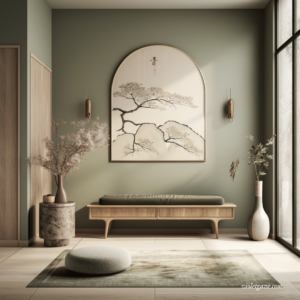

Boho.
Embrace your free-spirited, adventure-loving, eclectic self through boho. Express your individuality and create a space that’s worldly, artistic, and unconventional. Boho interior design will often include:
- Eclectic patterns and textures (lots of different styles, cultures, etc.)
- Rich + vibrant color palettes with bold and saturated hues
- Natural materials like wood, rattan, and wicker in furniture and decor
- Layered textiles like throw pillows, tapestries, and area rugs for added warmth and comfort
- Vintage or second-hand furniture pieces (something you won’t ever find in an IKEA or Home Goods)
- Global accents: including tribal patterns, Moroccan tiles, Indian fabrics, etc.
- Plants + greenery, especially ones that are big and bold (super tall, hanging from the ceiling, etc.)
- Artistic and creative display of wall art: paintings, photographs, and eclectic wall hangings
- Unconventional and non-traditional furniture arrangements— a drum as a table, palette as a bedframe
- Dream catchers, macramé, beaded curtains, hammocks, floor cushions, poufs— all casual seating and decor that’s fun, flowing, and a little ‘60s
Splurge Items
- ArmorStudioArt Monstera ornament (Etsy)
- Macrame wall hanging (Etsy)
- Swinging hammock chair (Etsy)
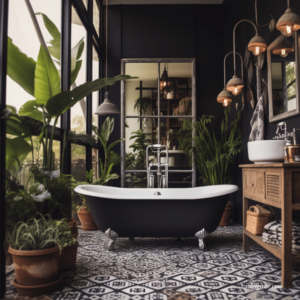
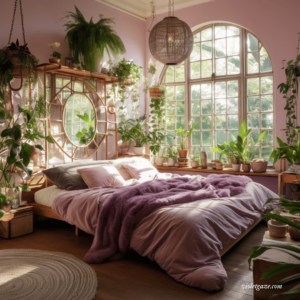
Art Deco.
Step back in time to the roaring twenties with an Art Deco interior design style— a style that’s all about luxury, elegance, and drama just like Gatsby’s fanciest party. Think:
- Symmetry and geometric shapes in design elements
- Rich and vibrant color schemes: deep yellows, reds, greens, blues, and pinks
- Luxurious-looking materials like gold, chrome, marble, and lacquer
- Bold and ornamental patterns: zigzags, chevrons, and sunbursts
- Furniture with sleek, clean lines and glossy finishes
- Mirrors, chrome plating, glass
- Layered and dramatic lighting, including chandeliers and sconces with geometric designs
- Large-scale and bold artwork with abstract or geometric themes
- High-gloss paint and shiny fabrics like satin and velvet for a glamorous touch
- Emphasis on vertical lines in architecture and design to create a sense of height and grandeur
Splurge Items
- Downsized Designs wood drawer knob (Etsy)
- DecoCreation Studio Chandelier (Etsy)
- RoomBloom art deco wallpaper (Etsy)
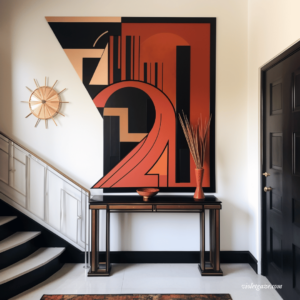
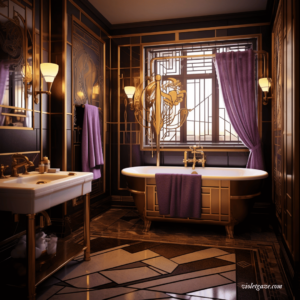
Warm Farmhouse.
Warm Farmhouse is a term I made up, playing upon the traditional farmhouse style without the harsh, bright whites. It features the quaint, warm little accents of the traditional farmhouse style but focuses on warmer colors instead of cool, harsh colors, as we usually see with lots of farmhouse decor. Warm Farmhouse has:
- Warm and inviting color palettes featuring earthy tones, soft neutrals, and muted colors (as opposed to the uber-bright farmhouse white that was popular a few years ago!)
- Natural materials like wood, stone, and cotton for a rustic and cozy feel
- Comfortable and plush furniture
- Textured fabrics: knitted throws, woolen rugs, and linen curtains for added warmth
- Vintage or antique decor pieces that add character and a sense of history
- Open shelving in kitchens and living areas to display pretty dishware and decorative items
- Large, family-style dining tables made of natural wood
- Decorative accents like mason jars, galvanized metal, and distressed wood
- Traditional farmhouse elements like apron sinks, barn doors, and exposed beams
- Floral patterns and motifs, often in soft, subdued colors
- Handmade and artisanal items that add a personal and homey touch
- Baskets, wooden crates, and other rustic storage solutions
- Emphasis on comfort and practicality, creating spaces that are lived-in and welcoming
Splurge Items
- Green Tandrils vintage wallpaper (Etsy)
- Simply French Market ruffled cotton curtains (Etsy)
- Prime Wood Shop rustic farmhouse LED light fixture (Etsy)
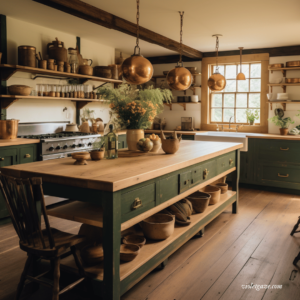
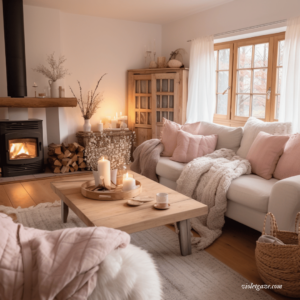
Dark Academia.
Dark academia is for those who’d love to bring a smaller-scale version of Hogwarts and vintage university vibes right into their home. This is for those who love knowledge, history, poetry, literature, and a little bit of mystery. With dark academia interior design, think about what you’d find in an old-world study:
- Dark, moody color palettes with emphasis on browns, blacks, deep greens, and burgundy
- Rich, luxurious fabrics like velvet, tweed, and leather
- Vintage or antique furniture like wooden bookcases, writing desks, and leather armchairs
- Books as decor, often displayed on large, wooden bookshelves
- Classical and Gothic decor elements: arches, columns, and ornate detailing
- Layered rugs, preferably oriental or Persian, to add texture and depth
- Mood lighting with soft, ambient sources like table lamps, candlesticks, and wall sconces
- Artwork and decorative objects featuring classical, literary, or botanical themes
- Emphasis on symmetry and classical proportions in room layouts and furniture arrangements
- Decorative molding and paneling on walls for added architectural interest
- A mix of different textures to add depth, such as wood, leather, and heavy fabrics
- Academic motifs: globes, vintage maps, and telescopes
- Snug reading nooks or study areas
- Natural materials like wood and stone in furniture and decor
Splurge Items
- marWALLous Mysterious Garden peel-and-stick wallpaper (Etsy)
- Steampunk Lamp (Etsy)
- Angel + Devil Kiss bookends (Etsy)
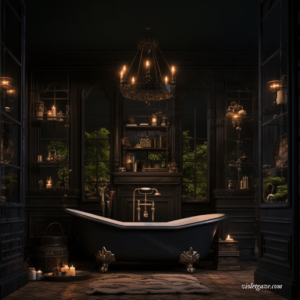
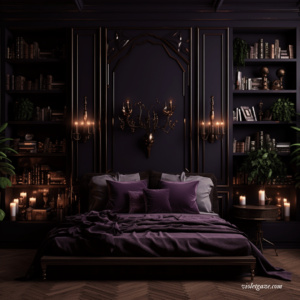
Witchcore/Witchy.
Our final interior design style is witchy or witchmore, which is perfect for those who love the mystical, mysterious, and magical. Basically, it’s about embodying the essence of witchcraft and everything magical all with a more moody, earthy palette. With a witchcore interior, expect:
- Mystical symbology and imagery like pentagrams, moons, stars, and tarot cards
- A dark and moody color palette, like rich purples, earthy greens, and blacks (often accented with warm metallics)
- A focus on multiple lighting sources including candles, lanterns, and fairy lights
- Displayed botanicals and dried herbs, flowers, and plants, both for aesthetics and for energetics
- An altar or sacred space for meditation, rituals, or prayers, decorated with meaningful objects and the other decor pieces I mentioned
- Eclectic mix of decor items such as skulls, vintage bottles, statues and other things that display mysticism and magic
- Soft, ambient lighting to enhance the mysterious and enchanting atmosphere
- Use of incense, essential oils, and diffusers for an earthy, herbal scent
Splurge Items
- Coopermoon arch crystal shelf (Etsy)
- Lunar calendar wheel of the year (Etsy)
- Gold + black rug (Etsy)
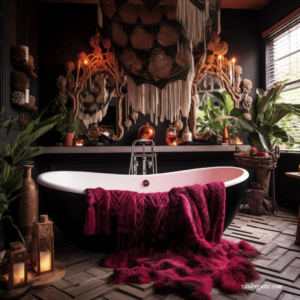
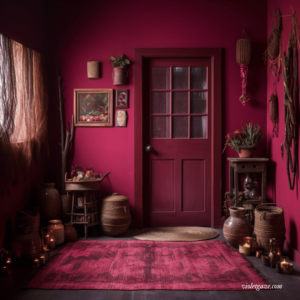
Hope you loved this little list of interior design styles as a breakdown of some of my favorite interior design styles. Which one speaks most to you? If you liked this, you might love…



Paragraph
Paragraph
Creative lifestyle
Creative lifestyle
Creative lifestyle
Paragraph
Xo, Kira Violet
I'm an artist at heart, performer and songwriter, and a lover of all things creatively & artistically beautiful. In this little corner of the internet, we talk about how to live an artistic lifestyle, fit with the tools, techniques, tips, and community. Get comfy and cozy.
BACK TO THE BLOG
I'll pass you little notes full of my latest musings, tips & fav creative tools for being your best artist.





